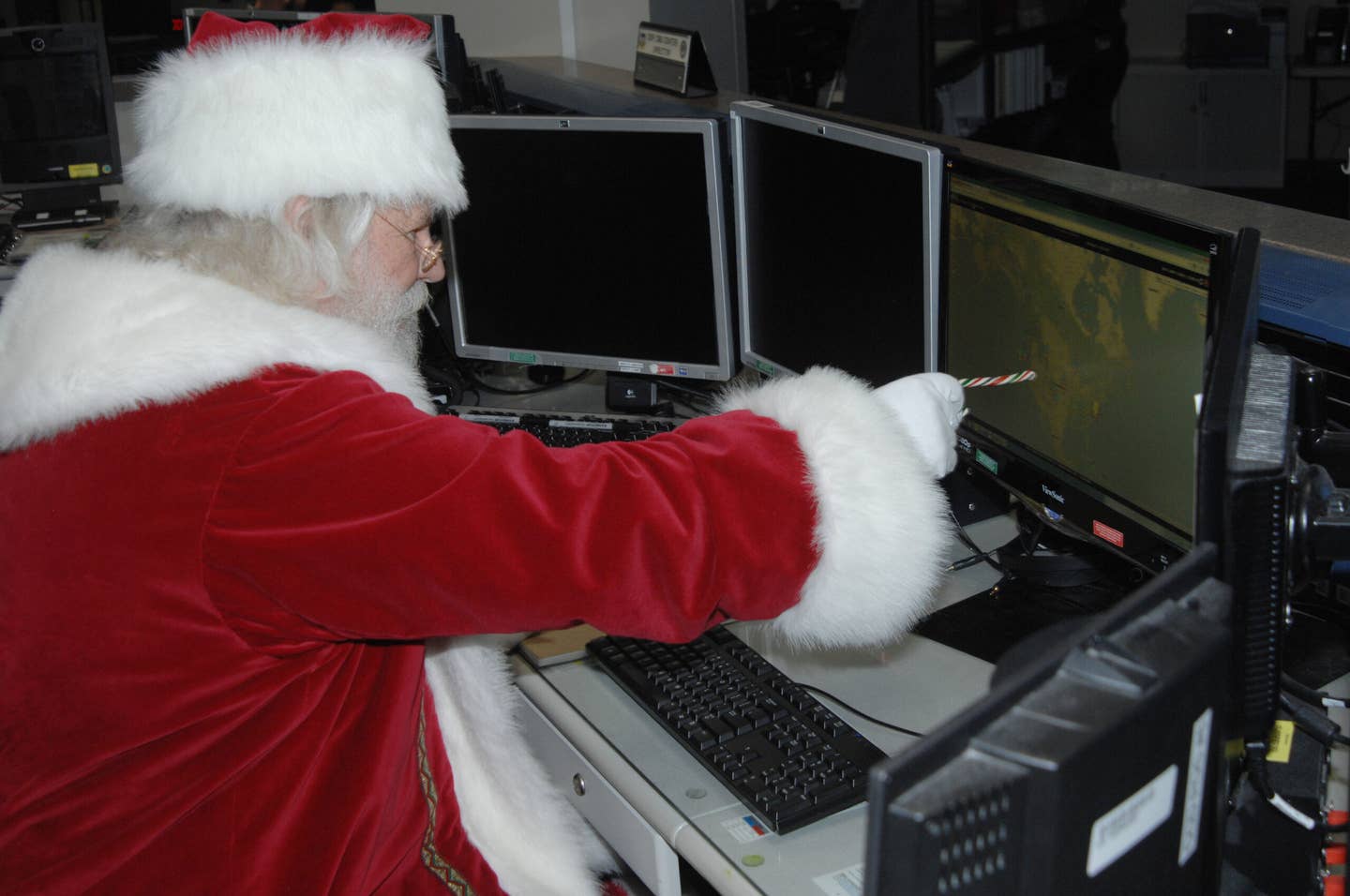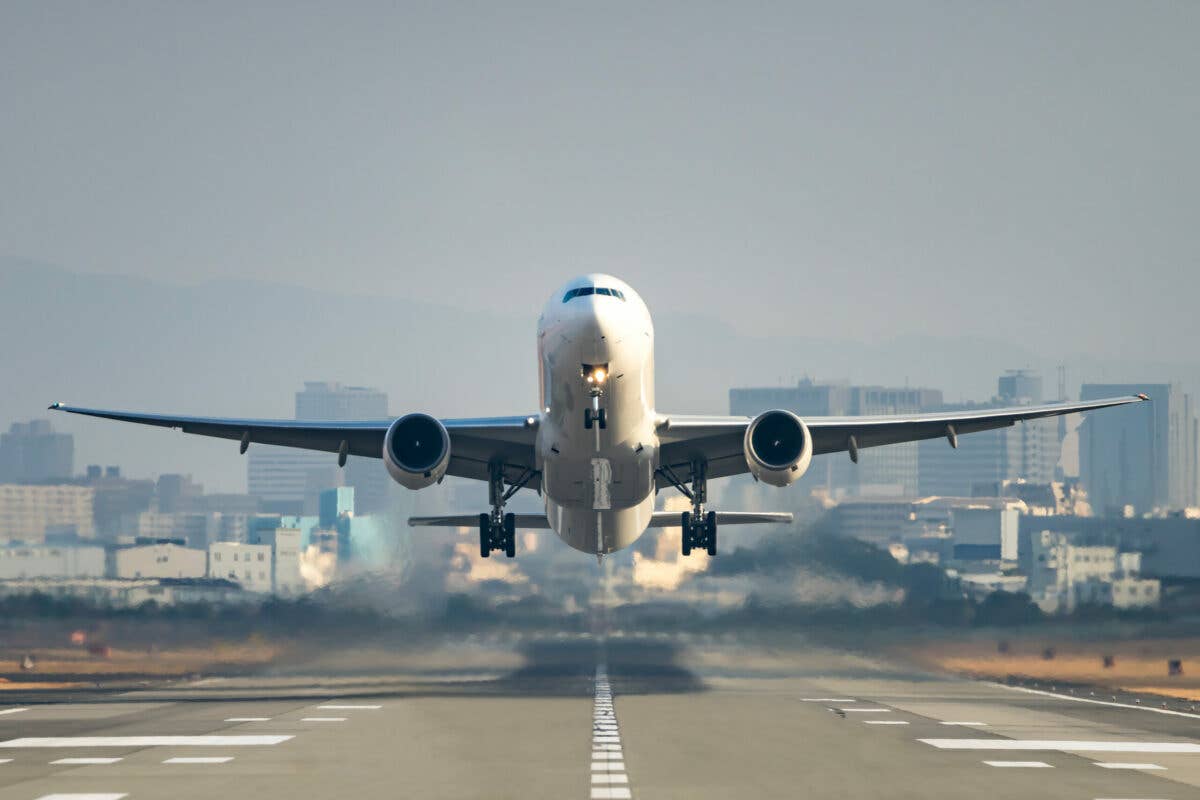How NORAD Tracks Santa’s Sleigh
The command keeps tabs on St. Nick’s Christmas Eve movements by using a webbed network of satellites, heat-seeking sensors and, of course, fighter jets.

Santa Claus reviews his flight plan for his trek across the globe in the North American Aerospace Defense Command and U.S. Northern Command Current Operations Center. [Courtesy: NORAD]
It won’t be long before everyone’s favorite jolly old elf takes to the skies on his annual spree of gift giving for children around the world. And while Santa has filed the same basic flight plan for hundreds of years, technological advancements in communications and military surveillance mean it’s easier than ever to keep tabs on his movements in real time.
This year, the North American Aerospace Defense Command (NORAD) will put a lock on Santa, relying on a globally integrated network of satellites in a geo-synchronous orbit outfitted with infrared, heat-seeking sensors.
There are also fighter jets.
“Currently, Santa tracking starts with the NORAD radar system called the North Warning System,” Capt. Alexandra Hejduk, a spokesperson for NORAD, told FLYING in an email.
“This powerful radar system has 47 installations strung along Alaska and northern Canada,” she said. “The moment the North Warning System radar indicates Santa’s departure from the North Pole, we transition Santa tracking to our network of globally integrated satellite systems.
“Next, we use satellites that are located in a geo-synchronous orbit [meaning the satellite is always fixed over the same spot on the Earth] at 22,300 miles above the Earth. The satellites have infrared sensors, which allow them to ‘see’ heat.”
NORAD fighter pilots use the flight data to rendezvous with Santa’s sleigh off the coast of Newfoundland in order to welcome him to North America, she said.
“As Santa proceeds west through North American airspace, the Canadian NORAD CF-18s conduct handoffs with their American F-15 and F-16 counterparts until reaching Alaska where F-22s conclude Santa’s North American escort over the Pacific Ocean,” Hejduk said.
Santa’s NORAD History
Tracking St. Nick’s entry into North American air space hasn’t always been such a big production.
The command—previously known as the Continental Air Defense Command (CONAD)—began tracking Santa in 1955 after receiving a call from a child who called a misprinted phone number listed on a local newspaper department store ad.
The child unknowingly called the CONAD Operations Center in Colorado Springs.
“Air Force Col. Harry Shoup, the commander on duty that night, was quick to realize a mistake had been made, and assured the child he was Santa. He then assigned a duty officer to continue answering calls,” Hejduk said.
The tradition continued after the formation of NORAD in 1958.
“Each year since, NORAD has dutifully reported Santa’s location on December 24 to millions of children and families across the globe,” Hejduk said.
Over the past decades, the primary method for learning Santa’s movements was to call NORAD’s phone operations center. In 2006, tracking moved online with the creation of NORAD’s website dedicated to the task. This year, tracking is also available across social media and a mobile app.
The program is supported by volunteers and corporate contributions, and is managed by NORAD Public Affairs.
“When we share NORAD’s methods of tracking Santa on December 24 using satellites, radars, and fighter jets, we are able to share the NORAD mission that we run 365 days of the year with people all around the world; we are still executing our day-to-day NORAD mission of continental defense on Christmas Eve,” Hejduk said.

Sign-up for newsletters & special offers!
Get the latest FLYING stories & special offers delivered directly to your inbox






